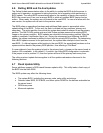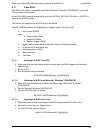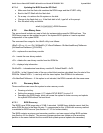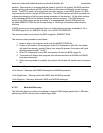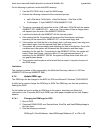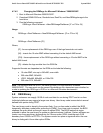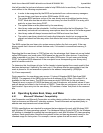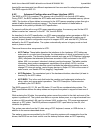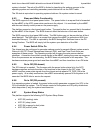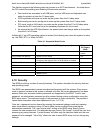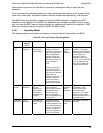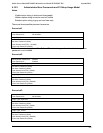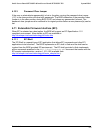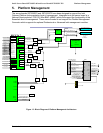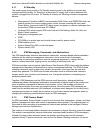
Intel® Server Board SE7320SP2 & Intel Server Board SE7525GP2 TPS System BIOS
Revision 2.0
99
system is loaded. The role of the BIOS is limited to describing the wakeup sources to the
operating system and controlling secondary control/status bits via the DSDT table.
The S5 state is equivalent to operating system shutdown. No system context is saved.
4.9.3 Sleep and Wake Functionality
The BIOS supports a front panel power button. The power button is a request that is forwarded
by the mBMC to the ACPI power state machines in the chipset. It is monitored by the mBMC
and does not directly control power on the power supply.
The platform supports a front panel reset button. The reset button is a request that is forwarded
by the mBMC to the chipset. The BIOS does not affect the behavior of the reset button.
The BIOS supports a front panel NMI button. The NMI button may not be provided on all front
panel designs. The NMI button is a request that causes the mBMC to generate an NMI (non-
maskable interrupt). The NMI is captured by the BIOS during Boot Services time or the OS
during Runtime. The BIOS will simply halt the system upon detection of the NMI.
4.9.4 Power Switch Off to On
The chipset may be configured to generate wakeup events for several different system events:
Wake on LAN, PCI Power Management Interrupt (PMI), and Real Time Clock Alarm are
examples of these events. The operating system will program the wake sources before
shutdown. A transition from either source results in the mBMC starting the power-up sequence.
Since the processors are not executing, the BIOS does not participate in this sequence. The
hardware receives power good and reset from the mBMC and then transitions to an ON state.
4.9.5 On to Off (OS absent)
The SCI interrupt is masked. The firmware polls the power button status bit in the ACPI
hardware registers and sets the state of the machine in the chipset to the OFF state. The
mBMC monitors power state signals from the chipset and de-asserts PS_PWR_ON to the
power supply. As a safety mechanism, the mBMC automatically powers off the system in 4-5
seconds if the BIOS fails to service the request.
4.9.6 On to Off (OS present)
If an operating system is loaded, the power button switch generates a request (via SCI) to the
OS to shutdown the system. The OS retains control of the system and OS policy determines
what sleep state (if any) the system transitions into.
4.9.7 System Sleep States
The platform supports the following ACPI System Sleep States:
• ACPI S0 (working) state
• ACPI S1 (sleep) state
• ACPI S4 (suspend to disk) state
• ACPI S5 (soft-off) state



